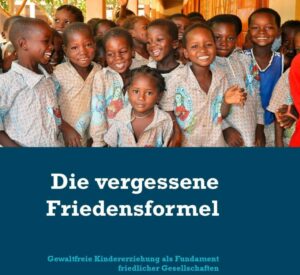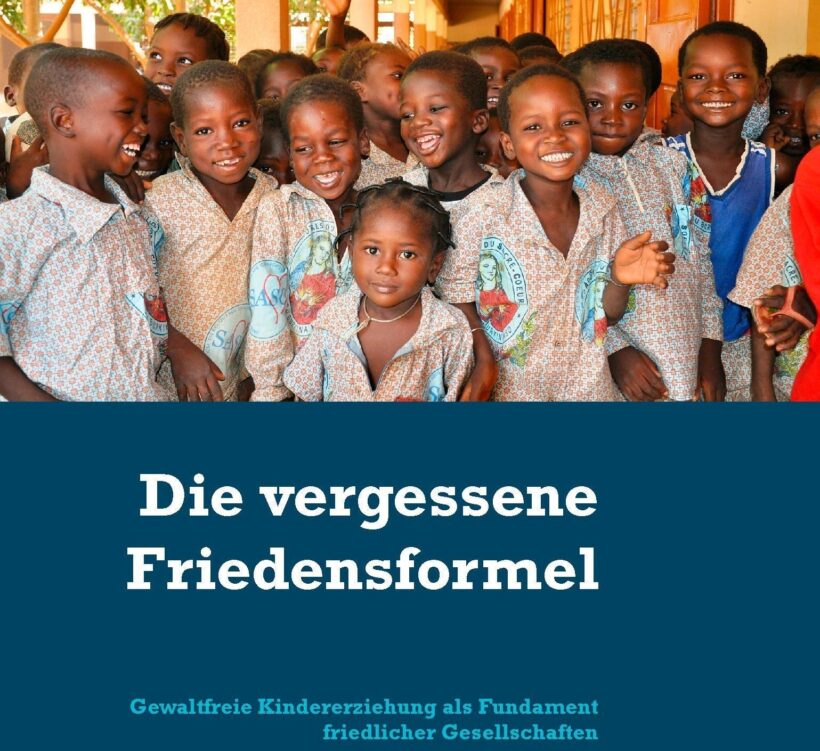As a sociologist and peace researcher, I am concerned with the connections between child-rearing styles in countries around the world and their peacefulness. I ask the simple question “Can a country become sustainably peaceful if a large proportion of its children already experience violence in the family?” Almost everything I have researched on this so far points to a definite “no” (I have published the most important sources and statistics on this in my ebook “The Forgotten Peace Formula”). And the “Child Protection SDG” 16.2. is – perhaps quite deliberately – a sub-item of the Peace SDG 16.
My research is interdisciplinary in nature: First, it is about international data on violence against children. Here, on the one hand, there are statistics from UNICEF, e.g. the reports “Hidden in plain sight” and “A familiar Face”, and on the other hand, there are detailed lists of legal child protection from corporal punishment in countries around the world: at http://endcorporalpunishment.org (Corporal punishment is the English term for corporal punishment). These lists also show whether corporal punishment is allowed in a country not only in families but also in schools, kindergartens or even prisons (!).
This data can be compared with the Global Peace Index, which is published every year by the Institute for Economics and Peace (IEP) and ranks nations in terms of their peacefulness. Already here it becomes clear that in the most peaceful countries of the world – Austria is almost always found among the top 5 (corporal punishment was banned in Austria in 1989 – it was the third country worldwide) – children may no longer be beaten. But of course there are other factors, such as democracy, prosperity, low social inequality.
The next scientific discipline is, of course, psychology: focusing on early childhood development, it is now clear that early childhood trauma – because hitting is just that – has a long negative after-effect, in the worst cases damaging or blocking the empathy centres in the brain. Of course, not every child who was beaten at an early age becomes violent as an adult, but the reverse is true – and this is where criminal psychology comes in – that almost every perpetrator of violence (yes, they are mostly men …) experienced violence as a child. In countries without a ban on corporal punishment, there is therefore a higher number of people who are prepared to use violence because their sense of empathy was disturbed in early childhood.
Neuropsychology, on the other hand, has established that there is no such thing as an “aggression drive”, but that aggressiveness is always a reaction to self-experienced violence, insults, neglect or exclusion. Joachim Bauer in particular explains this in detail in his books “The Cooperative Gene” and “Pain Threshold”. Rutger Bregman describes it in social-historical terms in his book “Basically Good”.
Perpetrators of violence “on a grand scale”, i.e. warmongers, dictators and despots, also almost always experienced violence as children. This is where the science of history comes into play, especially “psychohistory” (also called political psychology): Historians have begun to study the childhoods of political figures. An early important book on this was “In the Beginning was Education” by Alice Miller, in which she examined Adolf Hitler’s childhood: he experienced, in part, extreme humiliation in his family of origin. In my opinion, the best current book on the subject is “Childhood is Political” by Sven Fuchs, which examines the childhoods of Stalin, Mussolini, Saddam Hussein and many more – and also: especially explosive now – the childhood of Vladimir Putin (he too experienced violence and neglect – and corporal punishment is not yet banned in Russia either).
In a certain way, peace research has also been carried out in cultural and social anthropology, in which indigenous peoples on different continents have been studied with regard to their peaceful – or warlike – behaviour. Here, statements on non-violent child rearing appear from time to time, but one must honestly describe these studies as not statistically significant – because no statistics, but only descriptions were produced.
Thus, an overall picture is condensed from which it becomes clear that a non-violent upbringing of children is an important peace factor. If one then takes a pedagogical perspective – with regard to peace education – the question naturally arises: Is it not contradictory education if adults want to teach their children how important non-violence is, but they themselves use violence in raising children? Ironically, this is very often the case even in religious cultures: for example, there is the biblical quotation “He who spares with the rod corrupts the child” – and in some religious groups (e.g. the Evangelicals in the USA) it is advocated with vehemence – and they often even fight attempts to introduce child protection laws. The USA, by the way, is the only UN member country that does not want to ratify the UN Convention on the Rights of the Child: there, even in some schools, children may still be punished by being beaten with a wooden board – the paddle – a scandal that is far too unknown in Europe.
All in all, then, my research is about a “culture of peace”, a consistent culture of non-violence in all areas of society: simply because it is not credible to speak of the desire for peacefulness, but to allow violence in the education of children. Therefore, I would like to suggest the term “peace mainstreaming” for such an approach to peacebuilding: it says that violence (and oppression) must be reduced and eliminated in all areas of society if a country is to become sustainably peaceful.
That this also involves the equality and security of women has also been clearly demonstrated (see the books by Valerie Hudson et.al. and UNSC Resolution 1325 on the importance of women’s participation in peacebuilding processes).
Of course, legal child protection from violence is a peacebuilding strategy that will only work over time: It is an initial signal of the importance of the issue, but it will trigger discussions in the country concerned – and only a gradual change in child-rearing practices. And then it will probably take a generation for children who have grown up without violence to reach the age where they can help shape a country. Therefore, political actors who are concerned about the peacefulness and stability of their country must act immediately at this level. As Mahatma Gandhi said: “If we really want peace, we must begin with the children. From my point of view, this quote is also scientifically proven.
Websites of the author Franz Jedlicka: www.friedensforschung.com, www.whitehand.org











